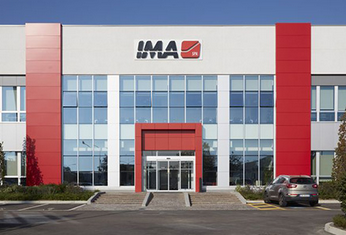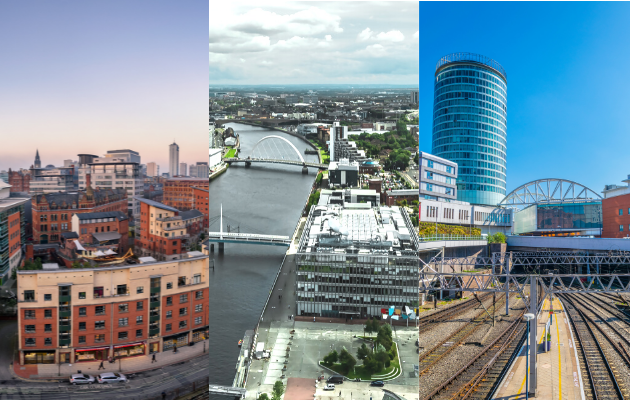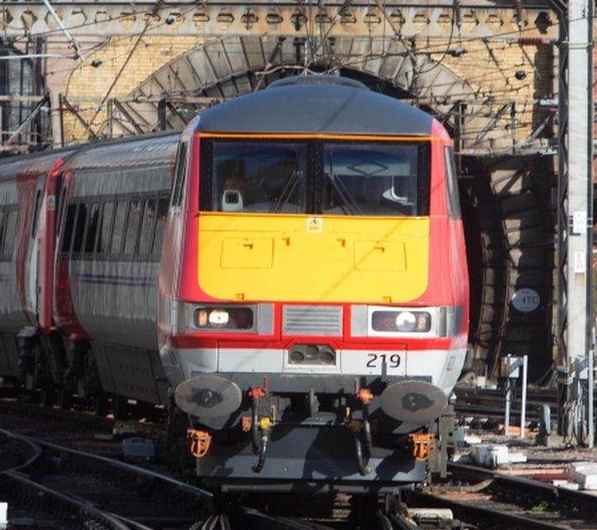The £5.7 billion promised in the Budget is not alone enough to level up urban transport says Centre for Cities in new research finding that just four in 10 people in the UK’s largest cities* outside London can reach their city centre by public transport in under 30 minutes.
This is significantly worse than in big European cities where almost seven in 10 people can travel to their city centre in less than 30 minutes.
It severely limits people’s job opportunities and effectively makes our largest cities much smaller than their European competitors.
While Rishi Sunak promised an ‘infrastructure revolution’ in last week’s Budget, poor infrastructure is rarely the only cause of urban transport problems. The main reason is that more people in European cities such as Bordeaux or Berlin live in well-connected midrise suburbs close to the centre than in detached, car-dependent UK suburbs.
More people living around public transport stops in European cities means their systems are more viable than the UK, where bureaucratic planning rules make it almost impossible build homes in well-connected suburbs.
The economic cost of this is huge: £23.1 billion per year that could be spent on levelling up. These missed billions are almost equivalent to the UK Government’s entire transport budget and more than it spends on the Home Office, international development, culture, or foreign affairs.
|
City |
Productivity gap, due to weak public transport accessibility |
|
Manchester |
£8.9 billion |
|
Birmingham |
£3.6 billion |
|
Leeds |
£2.8 billion |
|
Sheffield |
£2.3 billion |
|
Bristol |
£1.7 billion |
|
Newcastle |
£1.7 billion |
|
Nottingham |
£1 billion |
|
Liverpool |
£936 million |
|
Glasgow |
£137 million |
|
Combined lost productivity |
£23.1 billion |
|
Source: Traveltime; ONS; Eurostat; Centre for Cities’ calculations. Estimates based on PUA boundaries, which may be affecting the analysis by including some towns that will be unlikely to be connected by new public transport. |
|
Any attempt by the Government to fix this problem by investing in transport infrastructure will fail if it doesn’t also make substantial planning reforms to build midrise new neighbourhoods closer to city centres.
To improve public transport in big cities and add around £23 billion to the national economy the Government should build on its investments in the Budget by:
· Continuing to invest in new infrastructure where it is needed such as Manchester and Leeds.
· Reforming the planning system to make it easier to build midrise new neighbourhoods in well-connected suburbs.
· Encouraging councils to implement Local Development Orders – a little used tool to get more homes built.
Centre for Cities’ Chief Executive Andrew Carter said: “Last week the Chancellor promised an ‘infrastructure revolution’ and the money being given to city-regions is much-needed.
“However, it will not be enough to level up transport while suburbs remain so sparse and car-dependent. Just half of neighbourhoods built more than one home in the last decade.
“To maximise benefits of infrastructure spending, and make new routes and regular services more viable, the Government needs to commit to significant reforms to the planning system to allow our cities’ suburbs to grow. We know that planning reform is controversial, but without it the Government’s investment on urban transport won’t level up.
“On the other hand, coupling the investment with planning reform will add more than £23 billion to the economy.”
Case study: Comparing public transport in Leeds and Marseille
Leeds and Marseille have a similar population but Marseille is far denser than Leeds. Because of this, 87% of people living in Marseille can reach the centre in 30 minutes by public transport, compared to 38% in Leeds.
Because people are more spread out in Leeds than in Marseille, if Leeds’ public transport network was improved to cover the same area as Marseille’s, this would increase the share of people who can reach the centre to 61%, narrowing but not closing the gap with Marseille. So, while infrastructure investment is needed, Leeds cannot close the gap without changes to the city’s built form too.











